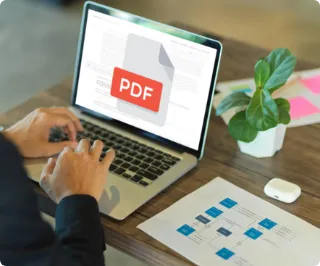Form I-9, Step by Step
What is Form I-9?
Form I-9, Employment Eligibility Verification, is a U.S. Citizenship and Immigration Services (USCIS) form required for every new hire. It confirms an employee’s identity and legal authorization to work in the United States. Employers must complete and keep it on file to show compliance if inspected by the Department of Homeland Security (DHS) or Immigration and Customs Enforcement (ICE).
All U.S. employers must complete Form I-9 for every new hire, no matter the business size or industry. Employees must also fill out their section of the form, whether they are U.S. citizens, permanent residents, or non-citizens authorized to work.
Exceptions:
Form I-9 is not required for independent contractors, casual domestic workers hired occasionally, or employees hired before November 7, 1986 who have remained with the same employer.
Employees must complete Section 1 by their first day of work. Employers must finish Section 2 within three business days of the start date. If an employee’s work authorization document has an expiration date, you must reverify their eligibility before it expires to keep them legally employed.
Completing Form I-9 is a shared responsibility between you and your employee. The process has to be followed in sequence to stay compliant with federal rules. Here’s how it works:
Step 1: Employee fills Section 1 (by day one)
On or before the first workday, the employee enters their legal name, address, date of birth, and (if required) Social Security number. They must attest to their citizenship or immigration status, then sign and date. If a preparer or translator helps, that section must also be signed. The latest form is available directly from USCIS I-9 Central.
Step 2: Employer inspects original documents (within three business days)
The employer (or authorized rep) must physically review the employee’s original, unexpired documents. Photocopies aren’t acceptable, except for certified birth certificates. You can review full compliance instructions in the official USCIS Form I-9 PDF.
Step 3: Employer completes Section 2 (within three business days)
After review, the employer records document details, the hire date, and business info, then signs and dates Section 2.
Step 4: Reverification (when required)
If work authorization expires, the employer must reverify before the expiration date—using Section 3 or a new Form I-9. USCIS offers guidance on reverification in their I-9 Central resource.
Step 5: Retention and storage
Keep each Form I-9 for three years after hire or one year after termination, whichever is later. Store securely on paper or electronically.
Step 6: Inspection readiness
Forms must be available for inspection if requested by DHS, ICE, or the Department of Labor. You can learn what happens in an audit by reviewing the ICE I-9 Inspection Overview.
Optional Step: E-Verify
E-Verify is an online system that checks employment eligibility. It’s optional for most employers but required in some states and for federal contractors. Learn more at E-Verify.gov.
To complete Form I-9, new hires must show documents that prove both identity and work authorization. Employees can provide one document from List A or one from List B plus one from List C. Employers must physically inspect the original documents (no photocopies, except certified birth certificates) and record the details in Section 2.
- List A (identity + work authorization): U.S. Passport, Permanent Resident Card (Green Card), Employment Authorization Document (EAD)
- List B (identity only): Driver’s License, State ID with photo, School ID card
List C (work authorization only): Social Security card (unless marked “Not valid for employment”), Certified Birth Certificate, other DHS/USCIS-issued work authorization documents
There’s no fee to file Form I-9, and the form itself is free to download from USCIS. Enrollment in E-Verify is also free. The only possible costs are if you hire outside legal or HR help, which typically runs $200–$500 per hour.
Form I-9 seems simple, but small errors can still cost you during an audit. Here are some of the most common mistakes employers make:
Avoid these mistakes:
- Accepting photocopies instead of original, unexpired documents
- Letting employees skip Section 1 or completing Section 2 late
- Recording document details incorrectly
- Failing to reverify expired work authorization
- Keeping I-9s longer or shorter than required
If you find an error, correct it properly: draw a single line through the mistake, write the correct info, and add initials and date. For bigger issues, complete a new form and keep both with an explanation.
- Technical violations: $272–$2,701 per employee (e.g., incomplete or missing forms).
- Knowingly hiring/retaining unauthorized workers: $676–$27,108 per violation.
Repeat or patterned violations: When violations are repeated or show a pattern, the government can increase the penalties further, bring criminal charges, and even bar your company from federal contracts.
Questions About Form I-9? We Have Answers
Do U.S. citizens need to complete Form I-9?
Yes. Every employee hired after November 6, 1986—including U.S. citizens—must complete Form I-9. This ensures a consistent process for verifying work eligibility for all employees.
Can I accept photocopies of documents for Form I-9?
No. Only original, unexpired documents are acceptable. The only exception is a certified copy of a birth certificate issued by a state or local authority.
Do remote workers need to complete Form I-9?
Yes. Employers must arrange for an authorized representative to review the employee’s original documents in person and complete Section 2 on their behalf.
Do I need to reverify permanent residents?
No. If an employee presents a Permanent Resident Card (Green Card), reverification is not required. Reverification applies only when an employee presents a temporary work authorization document with an expiration date.
Where can I get the latest I-9 form PDF?
The most current Form I-9 PDF is available on the USCIS website. Always confirm you’re using the latest version.
Why do people call it the “I-9 tax form” or “IRS I-9”?
That’s a common misconception. Form I-9 is not a tax form and has no connection to the IRS. It is an employment verification form managed by USCIS under DHS, separate from tax forms like the W-4 or W-2.



